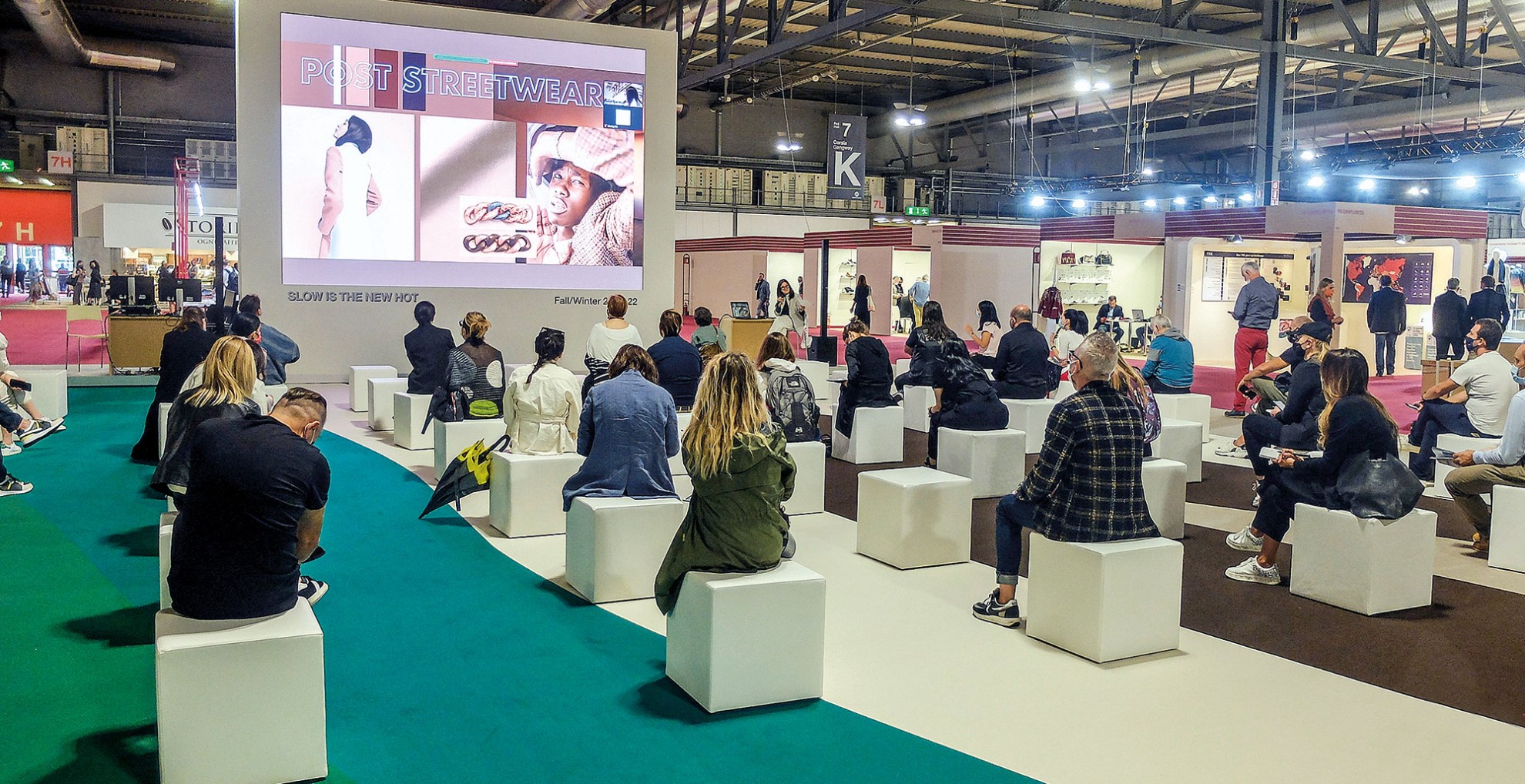In its return to face-to-face format, the fair of international suppliers, mostly Italian, left a general feeling of satisfaction among its participants.
The proposal of the 725 exhibitors ratified the importance of the fair as an international fashion reference for the manufacturing industry.
From the delegation of Spanish exhibiting suppliers, the largest of foreign origin with 34 companies, they expressed their agreement with the results obtained, despite the smaller exhibition space. However, they pointed out that "the public was very active and interested, corroborated by the request for samples of the products exhibited."

Corridors with permanent circulation of public to know the exhibited proposals.

Areas enabled for meeting and discussing the main fashion concepts for the upcoming Autumn-Winter season.
Several factors added to the success of the event. Among them, the good performance of MICAM -the international footwear fair- held in previous days in the same venue, together with MIPEL, of leather goods, and the holding of Fashion Week in Milan. This latest event generated a very special synergy for LINEAPELLE, given that large brands regularly send designers and researchers to the fair in search of novelties and trends.
Also the simultaneous realization and in adjacent pavilions, of SIMAC and TANNING TECH, the exhibition of technology for the manufacturing industry and tanneries, generated an additional number of visitors for both exhibitions.
For many exhibitors, having made the physical fair a reality marked a turning point in this period of health crisis, to enter a time of normalization. They agree that the return to social events will activate consumption and therefore fashion.

The realization of the physical fair allowed the visitors to have direct and tactile contact with the materials and components.

Milan Fashion Week, in the same period as the fair, contributed to the synergy between both events.
They also highlighted that despite international travel restrictions, the presence of foreign buyers was significant. The main origins were: Germany, France, Spain, Portugal, Switzerland and Turkey. From producing countries, Chinese, Vietnamese and Brazilians were counted; while from strategic markets there were buyers from Russia, the United Arab Emirates and Japan.
During the edition, “A New Point of Materials” made its debut, a critical space for discovery and study, information and debate, where a wide selection of leathers, materials and new generation technologies was presented, with their corresponding manufacturing processes. Everything as a whole, with the aim of specifying the concept of responsible innovation.
Within the programming, an agenda of talks related to green manufacturing, corporate finance and the role of retail trade was introduced.
RELATED ARTICLE:






